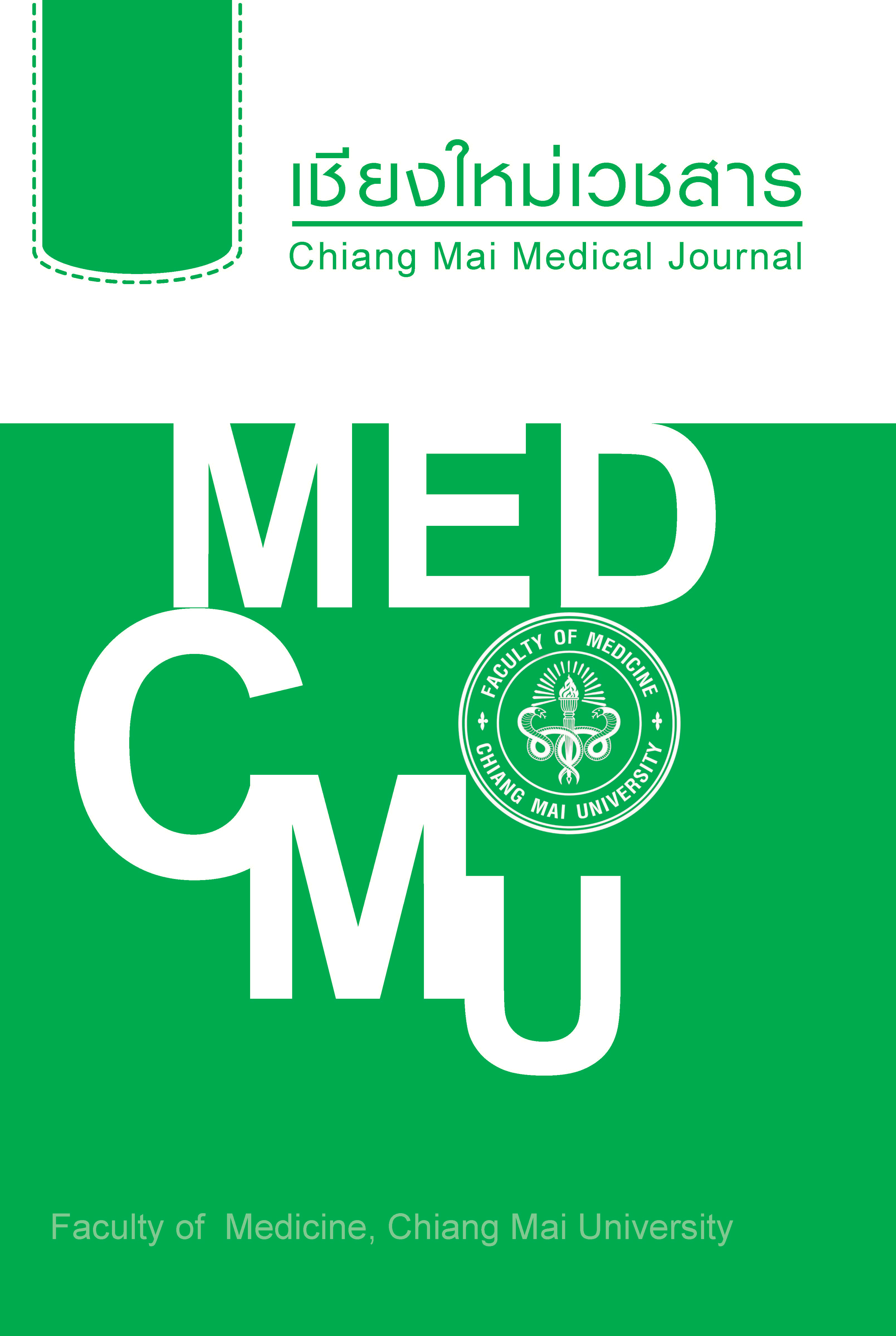Differentiation of pituitary macroadenoma and craniopharyngioma in adult Patients: MRI findings
Main Article Content
Abstract
Objective To compare the MRI findings between pituitary macroadenoma and craniopharyngioma.
Methods This retrospective study was conducted at our university Hospital. Patient data between January 2006 to June 2014 were reviewed. Pathological proof of pituitary macroadenoma 61 patients and other 10 patients of craniopharyngioma were included in the study. The patient data were categorized into gender and age. MRI findings analysed the tumor size, shape, component, adjacent brain edema, cavernous sinus invasion, sellar widening, presence of posterior T1-weighted bright spot, presence of normal pituitary gland, signal intensity of solid/cystic components on T1 and T2-weighted images and pattern of enhancement.
Results A snowman or ovoid shape with solid component, presence of sellar widening and posterior T1 bright spot were suggestive of pituitary macroadenoma (p<0.05). A lobulated shape with cystic component, presence of adjacent brain edema, epicenter of the tumor in suprasellar region which could be separable from the normal pituitary gland and presence of rim enhancement were suggestive of craniopharyngioma (p<0.05).
Conclusion MRI findings were helpful to distinguish between pituitary macroadenoma and craniopharyngioma by using tumor shape, component, sellar widening, presence of posterior T1 bright spot, adjacent brain edema, epicenter of the tumor in suprasellar region which could be separable from the normal pituitary gland and presence of rim enhancement.
Article Details

This work is licensed under a Creative Commons Attribution 4.0 International License.
References
Osborn AG. Sellar neoplasm and tumor-like le-sions. In: Osborn AG, editor. Osborn’s Brain: Im-aging, Pathology, and Anatomy. Salt Lake City, UT: Amirsys; 2012. p. 681-725.
Choi SH, Kwon BJ, Na DG, Kim JH, Han MH, Chang KH. Pituitary adenoma, craniopharyngio-ma, and Rathke cleft cyst involving both intrasellar and suprasellar regions: differentiation using MRI. Clin Radiol 2007;62:453-62.
Sautner D, Saeger W, Ludecke DK. Tumors of the sellar region mimicking pituitary adenomas. Exp Clin Endocrinol 1993;101:283-9.
Connor SE, Penney CC. MRI in the differential diagnosis of a sellar mass. Clin Radiol. 2003;58:20-31.
Rao VJ, James RA, Mitra D. Imaging character-istics of common suprasellar lesions with empha-sis on MRI fi ndings. Clin Radiol 2008;63:939-47.
Rennert J, Doerfl er A. Imaging of sellar and par-asellar lesions. Clinical Neurology and Neurosur-gery 109:111-24.
Kumar J, Kumar A, Sharma R, Vashisht S. Mag-netic resonance imaging of sellar and suprasellar pathology: a pictorial review. Curr Probl Diagn Radiol 2007;36:227-36.
Donovan JL, Nesbit GM. Distinction of masses involving the sella and suprasellar space: speci-fi city of imaging features. American Journal of Roentgenology 1996;167:597-603.
Famini P, Maya MM, Melmed S. Pituitary mag-netic resonance imaging for sellar and parasellar masses: ten-year experience in 2598 patients. J Clin Endocrinol Metab 2011;96:1633-41.
Wilson CB. Surgical management of pituitary tu-mors. J Clin Endocrinol Metab 1997;82:2381-5.
Laws ER, Jane JA, Jr. Neurosurgical approach to treating pituitary adenomas. Growth Horm IGF Res 2005;15 Suppl A:S36-41.
Osborn AG. Pituitary macroadenoma. In: Osborn AG, L.Salman K, Barkovich AJ, editors. Diagnos-tic imaging : brain. second ed. Salt Lake City, UT: Amirsys; 2010. p. II-2-26.
Rees FH. Craniopharyngioma. In: Osborn AG, L.Salman K, Barkovich AJ, editors. Diagnostic imaging : brain. Second ed. Salt Lake City, UT: Amirsys; 2010. p. II-2-34.
Elliott RE, Jane JA, Jr., Wisoff JH. Surgical management of craniopharyngiomas in children: meta-analysis and comparison of transcranial and transsphenoidal approaches. Neurosurgery. 2011;69:630-43; discussion 43.
Sartoretti-Schefer S, Wichmann W, Aguzzi A, Valavanis A. MR differentiation of adamantinous and squamous-papillary craniopharyngiomas. AJNR Am J Neuroradiol 1997;18:77-87.
Symons SP, Montanera WJ, Aviv RI, Kucharc-zyk W. The Sella Turcica and Parasellar Region. In: Atlas SW, editor. Magnetic Resonance Imaging of the Brain and Spine. Fourth ed. Philadelphia, PA: Lippincott Williams & Wilkins, a Wolters Klu-wer business; 2009. p.1142-3.
Sathyanarayana HP, Kailasam V, Chitharanjan AB. Sella turcica-Its importance in orthodontics and craniofacial morphology. Dental Research Journal. 2013;10:571-5.
Symons SP, Montanera WJ, Aviv RI, Kucharc-zyk W. The Sella Turcica and Parasellar Region. In: Atlas SW, editor. Magnetic Resonance Imaging of the Brain and Spine. Fourth ed. Philadelphia, PA: Lippincott Williams & Wilkins, a Wolters Klu-wer business; 2009. p.1145.
Smith AB, Cha S. Sellar and Juxtaselar Tumors. In: Naidich TP, Castillo M, Cha S, Smirniotopoulos JG, editors. Imaging of the Brain. Saunders; 2012. p. 728-53.
Sartoretti-Schefer S, Wichmann W, Aguzzi A, Valavanis A. MR differentiation of adamantinous and squamous-papillary craniopharyngiomas. American Journal of Neuroradiology 1997;18:77-87.
Symons SP, Montanera WJ, Aviv RI, Kucharc-zyk W. The Sella Turcica and Parasellar Region. In: Atlas SW, editor. Magnetic Resonance Imag-ing of the Brain and Spine. Fourth ed. Philadelpia: Lippincott Williams & Wilkins, a Wolters Kluwer business; 2009. p.1139-40.
Chang CV, Nunes Vdos S, Felicio AC, Zanini MA, Cunha-Neto MB, de Castro AV. Mixed germ cell tumor of the pituitary-hypothalamic region presenting as craniopharyngioma: case report and review of the literature. Arq Bras Endocrinol Metabol 2008;52:1501-4.
Ishii K, Isono M, Hori S, Kinba Y, Mori T. [A case of craniopharyngioma with intratumoral hemor-rhage]. No Shinkei Geka. 1999;27:73-7.
Tosaka M, Sato N, Hirato J, Fujimaki H, Yama-guchi R, Kohga H, et al. Assessment of hemor-rhage in pituitary macroadenoma by T2*-weighted gradient-echo MR imaging. AJNR Am J Neurora-diol 2007;28:2023-9.
Buchfelder M, Schlaffer S. Imaging of pituitary pathology. In: Fliers E, Korbonits M, Romijn JA, editors. Handbook of Clinical Neurology. Elsevier B.V.; 2014. p. 160.


